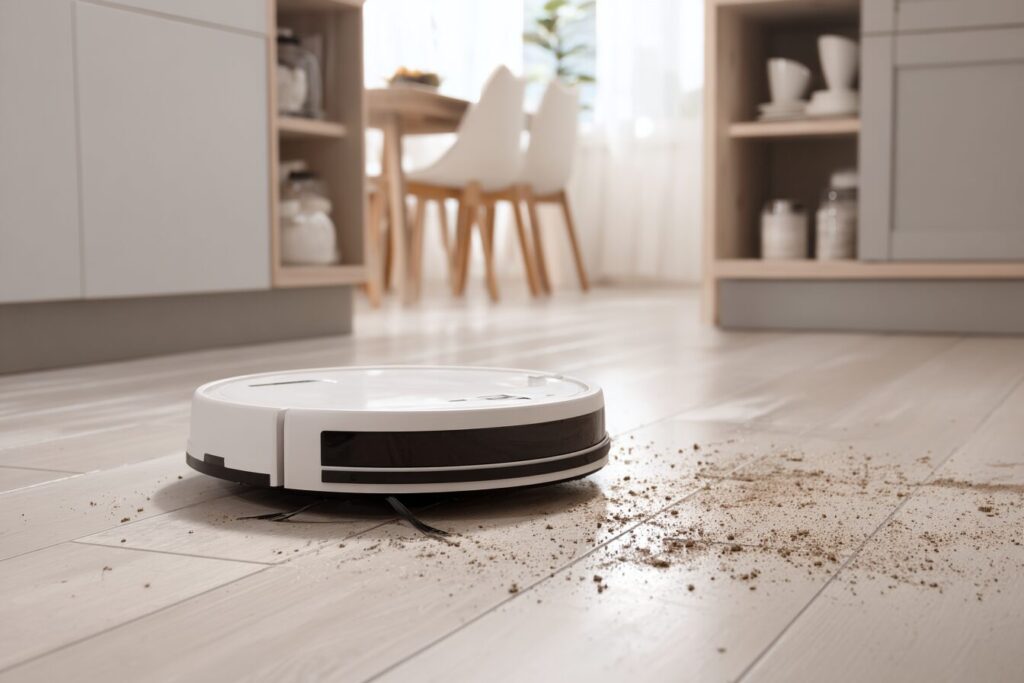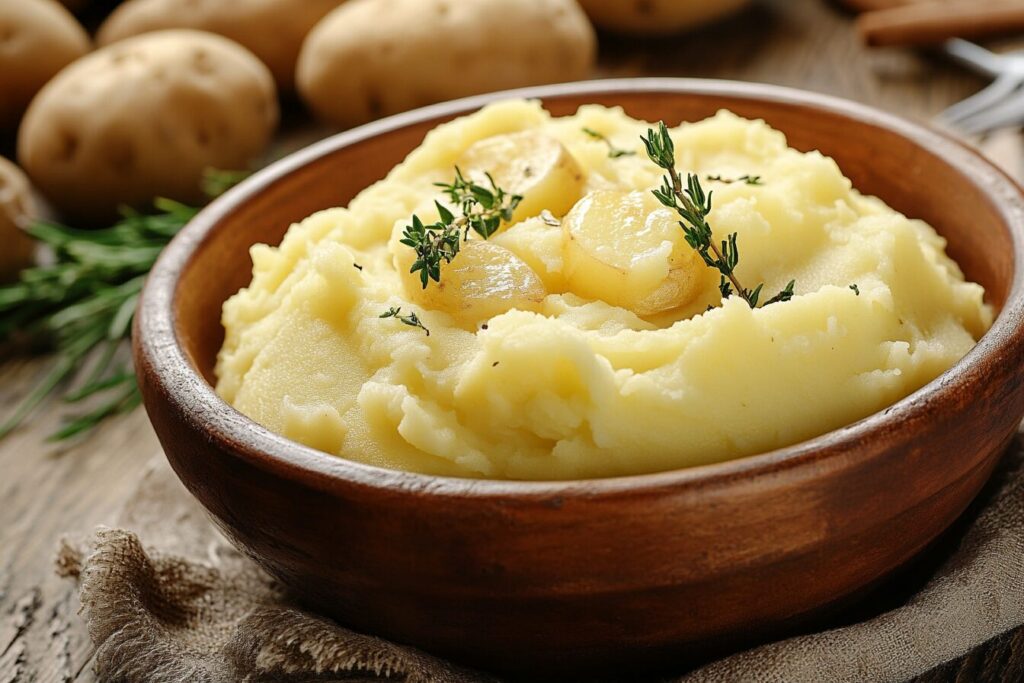Because flour, onion skins, and breadcrumbs wait for no one.
If you cook from scratch every day, your kitchen floors are probably a battlefield: flour near the mixer, rice under the fridge, onion skins by the trash, and toast crumbs everywhere. A robot vacuum can be a lifesaver—but only if it’s built to handle real kitchen messes.
Here’s what you actually need to look for in a robot vacuum when your kitchen is more functional than flawless.
1. Suction Strength That Doesn’t Scatter Flour
If you use dry ingredients like flour, oats, sugar, or cocoa powder regularly, don’t settle for a model under 1800 Pa of suction. Weak suction just blows fine particles into corners or under appliances.
Why it matters: We tested several models in real kitchens and found that suction power was the #1 factor in whether a robot vacuum actually picked up flour or just pushed it around.
👉 Read more in Robot Vacuums That Actually Handle Flour, Rice, and Onion Skins
2. Tangle-Free or Brushless Designs
If your meals involve a lot of fresh produce, onion skins and veggie peels can jam up a vacuum fast. Brushless designs or tangle-free rollers handle stringy messes like a pro.
Why it matters: Some budget-friendly models outperformed pricey ones—especially with flour and skins hiding under the cabinets.
👉 See the best performers in Best Budget Robot Vacuums Under $150 (Tested in a Real Kitchen)
3. A Mop That Knows When to Lift
Cooking from scratch means spills. If your robot has a mop function, it needs to know when not to use it—or your flour spill turns into glue.
Why it matters: Advanced mop systems that lift automatically help your vacuum clean up juice spills without dragging water across dry crumbs.
👉 Learn what to expect from premium and mid-range models in Best Robot Vacuums for 2025
4. Smart Mapping with Zone Cleaning
Let’s be honest—you don’t need your robot vacuum to clean your whole house. You need it to hit the kitchen, the pantry, and under the table where dinner chaos happens.
Why it matters: Zone cleaning saves time and battery—and helps your vacuum target problem areas after meal prep.
👉 See how I use this feature in How I Use My Robot Vacuum to Keep My Kitchen Clean Between Meal Preps
5. A Self-Empty Base (or a Big Bin)
Cooking every day means you’re going to fill up that dustbin—fast. The last thing you want is your vacuum quitting mid-cycle because it’s full of rice and onion skins.
Why it matters: Self-emptying models or larger dustbins make robot vacuums more hands-off for busy home cooks.
👉 Learn what kind of maintenance to expect in Robot Vacuum vs. Manual Sweeping: Which Is Cheaper in the Long Run?
Bonus: Prep Makes All the Difference
Even the best robot vacuum will struggle if your kitchen isn’t set up for it. From loose cords to damp spills, a little prep goes a long way.
👉 Read this first: How to Prep Your Kitchen for a Robot Vacuum
📌 Pin It Now, Use It Later
Too busy cooking to remember all this later?
Pin this post to your kitchen cleaning or smart home board and come back when you’re ready to pick the robot vacuum that fits your real life.
📍 Real messes. Real kitchens. Robot vacuums that actually work for home cooks.



